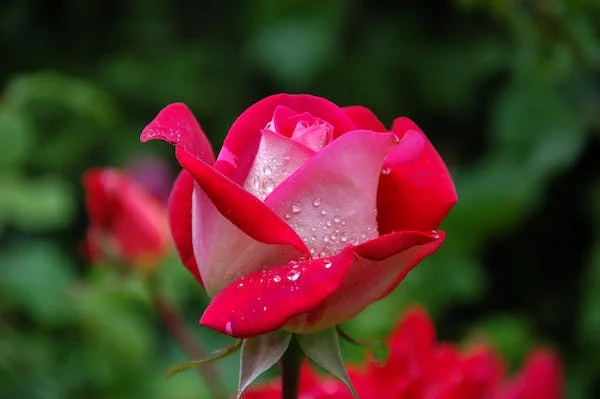quicksand rose A Unique and Captivating Flower

Quicksand roses, also known as Rosa arenaria, are a fascinating species of roses that captivate with their unique appearance and cultural quicksand rose significance. In this article, we delve into the characteristics, cultivation, and landscaping potential of these enchanting blooms.
Characteristics of Quicksand Rose
Appearance
Quicksand roses are characterized by their delicate, pale pink petals that resemble layers of fine sand. The flowers typically bloom in clusters, creating a stunning visual display reminiscent of soft, flowing sand dunes.
Habitat
These roses are native to sandy coastal regions, where they thrive in well-drained soil and ample sunlight. They are often found growing wild along shorelines and in dune habitats.
Unique Features
One of the most distinctive features of quicksand roses is their ability to tolerate poor soil conditions, including sandy and nutrient-deficient soils. This resilience makes them ideal for coastal gardens and landscapes.
Cultural Significance
Quicksand roses hold special significance in various cultures around the world.
Symbolism
In many cultures, quicksand roses symbolize resilience, adaptability, and the beauty that emerges from adversity. Their ability to flourish in harsh conditions serves as a metaphor for overcoming challenges and thriving in difficult circumstances.
Literature and Art
Throughout history, quicksand roses have inspired poets, artists, and writers with their ethereal beauty. They have been featured in numerous works of literature and art, often as symbols of fleeting beauty and the passage of time.
Growing Quicksand Roses
Cultivating quicksand roses in your garden can be a rewarding experience, provided you meet their specific requirements.
Soil Requirements
Quicksand roses prefer well-drained, sandy soil with a slightly acidic pH. Amending the soil with organic matter can improve its fertility and moisture retention.
Sunlight and Watering Needs
These roses thrive in full sunlight and require regular watering, especially during the growing season. However, they are drought-tolerant once established and can withstand periods of dryness.
Propagation Techniques
Quicksand roses can be propagated quicksand rose from seeds, cuttings, or by division. Softwood cuttings taken in spring or early summer tend to root quickly and establish well.
Maintenance and Care
Proper maintenance is essential for keeping quicksand roses healthy and vibrant.
Pruning
Regular pruning helps maintain the shape and vigor of quicksand roses. Remove dead or diseased branches and prune lightly after the flowering season to encourage new growth.
Pest and Disease Management
Keep an eye out for common rose pests, such as aphids and spider mites, and treat infestations promptly. Additionally, ensure good air circulation around the plants to minimize the risk of fungal diseases.
Quicksand Rose Varieties
Several cultivars of quicksand roses are available, each with its own unique characteristics.
Popular Cultivars
- Rosa arenaria ‘Sahara Sunset’: Known for its vibrant pink blooms and compact growth habit.
- Rosa arenaria ‘Sandcastle’: Features large, double flowers with a subtle fragrance.
Unique Characteristics of Different Varieties
Some varieties may exhibit variations in flower color, size, or fragrance, allowing for diverse landscaping possibilities.
Landscaping with Quicksand Roses
Quicksand roses add a touch of elegance and charm to any landscape setting.
Design Ideas
- Plant them along pathways or in mixed borders for a soft, romantic feel.
- Create a seaside garden theme by pairing quicksand roses with coastal grasses and native beach plants.
Complementary Plants
Consider incorporating other drought-tolerant perennials and ornamental grasses to create a cohesive and low-maintenance landscape design.
Benefits of Quicksand Roses
Beyond their aesthetic appeal, quicksand roses offer several practical benefits.
Aesthetic Appeal
Their delicate blooms and graceful foliage provide year-round beauty and interest in the garden.
Ecological Importance
Quicksand roses attract quicksand rose pollinators such as bees and butterflies, contributing to biodiversity and ecosystem health.
Challenges in Growing Quicksand Roses
While quicksand roses are relatively easy to grow, they are not without their challenges.
Environmental Factors
Extreme heat, salt spray, and strong winds can stress quicksand roses, requiring additional care and protection in coastal environments.
Maintenance Issues
Regular watering and fertilization may be necessary to support optimal growth and flowering, particularly in sandy soils with low nutrient levels.
Conclusion
Quicksand roses are a delightful addition to any garden, offering beauty, symbolism, and ecological value. With proper care and attention, these resilient blooms can thrive in a variety of landscape settings, bringing joy and inspiration to all who encounter them.



